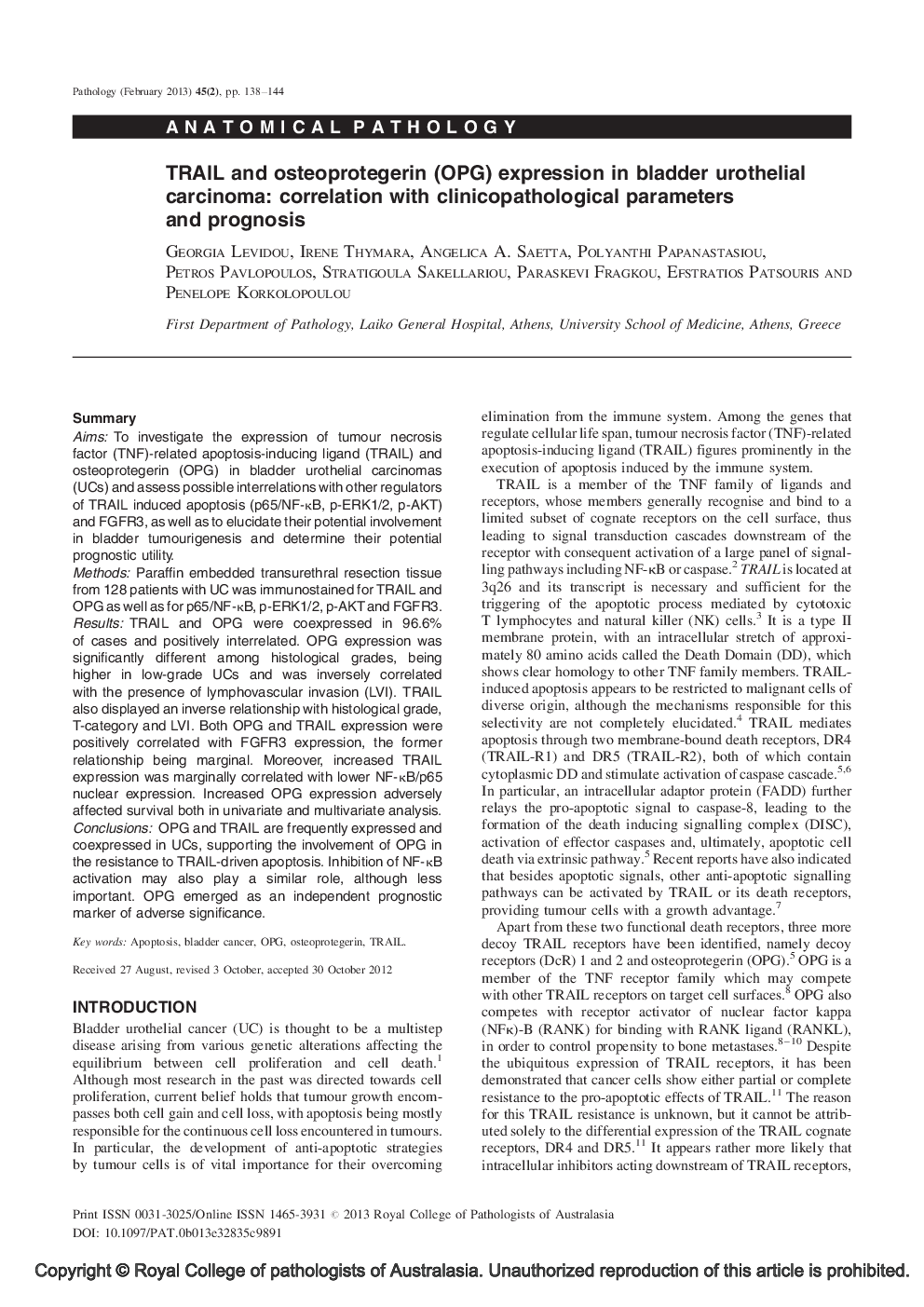| Article ID | Journal | Published Year | Pages | File Type |
|---|---|---|---|---|
| 105144 | Pathology | 2013 | 7 Pages |
SummaryAimsTo investigate the expression of tumour necrosis factor (TNF)-related apoptosis-inducing ligand (TRAIL) and osteoprotegerin (OPG) in bladder urothelial carcinomas (UCs) and assess possible interrelations with other regulators of TRAIL induced apoptosis (p65/NF-κB, p-ERK1/2, p-AKT) and FGFR3, as well as to elucidate their potential involvement in bladder tumourigenesis and determine their potential prognostic utility.MethodsParaffin embedded transurethral resection tissue from 128 patients with UC was immunostained for TRAIL and OPGaswellasfor p65/NF-κB, p-ERK1/2, p-AKTand FGFR3.ResultsTRAIL and OPG were coexpressed in 96.6% of cases and positively interrelated. OPG expression was significantly different among histological grades, being higher in low-grade UCs and was inversely correlated with the presence of lymphovascular invasion (LVI). TRAIL also displayed an inverse relationship with histological grade, T-category and LVI. Both OPG and TRAIL expression were positively correlated with FGFR3 expression, the former relationship being marginal. Moreover, increased TRAIL expression was marginally correlated with lower NF-kB/p65 nuclear expression. Increased OPG expression adversely affected survival both in univariate and multivariate analysis.ConclusionsOPG and TRAIL are frequently expressed and coexpressed in UCs, supporting the involvement of OPG in the resistance to TRAIL-driven apoptosis. Inhibition of NF-κB activation may also play a similar role, although less important. OPG emerged as an independent prognostic marker of adverse significance.
